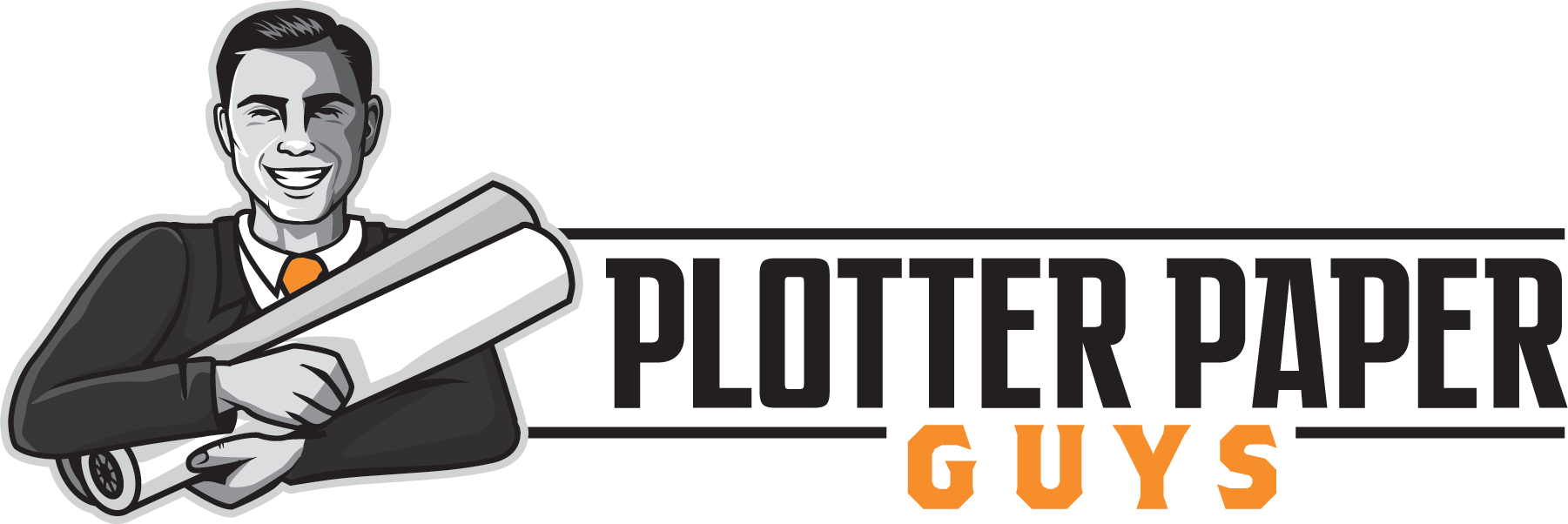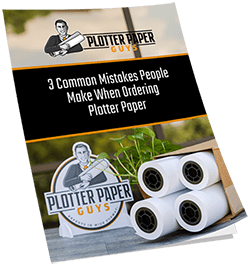Engineering paper rolls facilitate fast project completion and ensure high levels of accuracy. Before the invention of engineering and CAD paper rolls, the experts had to make complex calculations and drawings by hand.
Today, the availability of the computer-aided-design (CAD) software and CAD bond papers gives mechanical engineers’ and architects’ designs a professional look.
But how do you choose the right paper roll for your project, considering they have varying specifications? In this article, you’ll learn what to look for in CAD rolls and how to choose the best engineering paper rolls for your project.
What to Look for in CAD Paper Rolls
It takes a lot of sketching and paperwork before an engineer or an architect can develop a final project sketch. Unlike in the past, when architects had to waste several papers before getting the right design, CAD paper rolls have made it easier.
But before you buy the engineering paper rolls, here are some things to consider:
The Type of Printer
With the high demand for accuracy, clear graphics, and precision, you don’t want to print out vague images of your project. High-quality prints are dependent on the material used and the type of printer that you’re using.
The use of plotters is gaining popularity and has proven to be more effective than ordinary printers. Instead of toners, plotters draw several continuous lines using a special pen, pencil, and other writing tools.
These printing machines can print different sizes of sheets without losing any resolution.
Besides detailed and high-quality prints, plotters can print on materials that inkjet printers don’t. You can print on plywood, boards, plastic, metal, or aluminum using the device. It provides you with a platform to create graphics that can stand out from your competitors.
Considering that plotters are not ordinary printers, you must have enough workload to justify their expense. Also, the plotter size matters since most CAD papers come in rolls and require sufficient space.
Choosing the Ideal Plotter Type
The printing industry offers several types of plotters that can make your selection process cumbersome. It’s also essential that you understand how different plotters function before you buy one.
Here’s an analysis of different plotter types and what they do.
Drum Plotter
Unlike other plotters, this one is common across the printing industry. Paper or other materials lie on the typical drum attached to the plotter during the printing process.
The pen doesn’t move during printing; it’s the drum that moves to the length of the pen.
This is the right plotter for you if you’re printing flexible materials that can bend over the plotter drum. Also, your printing material size will depend on the drum size.
Inkjet Plotter
If you’re new in the business and cannot afford the expensive plotters, this is the right thing for you. The use of inkjet technology makes it a low-cost device, but it does not produce cheap-looking prints! When the colors of yellow, cyan, and magenta are combined, the inkjet plotter produces fantastic images and graphics. This type of machine is perfect for architects who work on small and large projects, or bigger printshops that offer 11” – 60” wide projects. No matter what your industry is, this plotter can produce sharp details and quality prints that your customers will approve of
Flatbed Plotter
If your projects don’t need folding, buying a flatbed plotter is essential. Since the device prints on flat surfaces, designers can produce large sized images, unlike other plotters.
While using it, you can use as many colors as possible, considering that its pen is not fixed. This plotter provides excellent plywood, plastic, and metallic sheet prints. But, to achieve prints with high resolutions, the materials must fit the printer bed’s dimensions.
With information on different plotter types, your selection process is now easy. However, before buying, you must consider the following:
• The plotter brand
• Workload
• Cost
• Availability of accessories like cutter blades, chemicals, and pens
• Print speed and resolution
Plotter buying is a long-term investment that should resonate with your budget and needs. Analyze the devices and buy from the best brand in town.
How to Choose the Best Engineering Paper Rolls
After several hours of creating unique engineering designs, it’s time to print an outstanding piece. However, not every type of paper can produce high-quality prints like some plotter paper rolls do. They can create vector graphics, different designs, and amazing blueprints, diagrams, and layouts.
There is a plotter roll for every plotter machine on the market. Depending on your machine and project, you’ll get these rolls in different textures, weights, sizes, and thicknesses.
Also, architects can choose between bond paper rolls, coated and uncoated plotter rolls.
Wondering which variety of paper rolls to choose? Here are factors to consider when selecting the ideal CAD paper rolls.
Coated Bond Papers
These coated bond papers are sealed with a clay coating on top. Thus, it restricts how much ink gets into the paper fibers, a trait that’s important for all architects. It allows the ink to sit on the surface as a defined and crisp dot, giving you a vibrant and more admirable print.
What sets this paper apart from others? Whether you’re printing color maps, photographs, or inkjet-printed color renderings, it provides you with crisp and bright output. This is made possible by the chemical treatment done during its manufacture.
Uncoated Bond Papers
Unlike the coated bond papers, this type does not enjoy an extra layer of clay coating. Though it’s inexpensive, its porosity allows ink to pass through the paper fibers. The ink absorption gives the paper a soft and warm appearance.
Did you know you can recycle uncoated bond papers when the project is over? These papers dry fast and are affordable. This makes them a favorite among monochromatic plotters and engineering copiers.
If you’re looking for bond papers that will look authentic, give a warm appearance, or offer a vibrant canvas, uncoated papers can do the trick. Their ability to solidify 3D images makes them an excellent fit for home furnishings, fine art, and featured textiles.
20 LB CAD Inkjet Bond Paper
If your engineering firm uses Inkjet printers, the 20 LB inkjet bond paper is the best. It works best with inkjet printers like HP, Canon, and Epson, among others.
Their affordability and ability to work on monochrome inkjets and pen plotting make them ideal for architects and engineers.
Whether you’re printing spot color or the standard black and white, you’re sure of getting high-quality prints using these bond papers.
If you’re looking for the best Inkjet bond papers, the 20 lb CAD Inkjet Bond Paper has got you covered. Regardless of your inkjet printer type, the papers will deliver quality and perfect prints.
Cut with precision, these bond rolls work perfectly for general black and white printing purposes. Besides, the CAD paper rolls are offered in 2” and 3” cores to work with wide-format Inkjet printers and Xerographic printers. You’ll get high-quality and cheaper AEC and CAD prints to fit your needs.
Order Quality CAD Engineering Paper Rolls Today
Are you looking for quality CAD paper rolls for your architectural or engineering project but don’t know where to get them? At Plotter Paper Guys, we have over 40 years of experience in manufacturing and quality papers.
If you’re not sure of which products suit your business or need to make an order, talk to one of our experts today.




